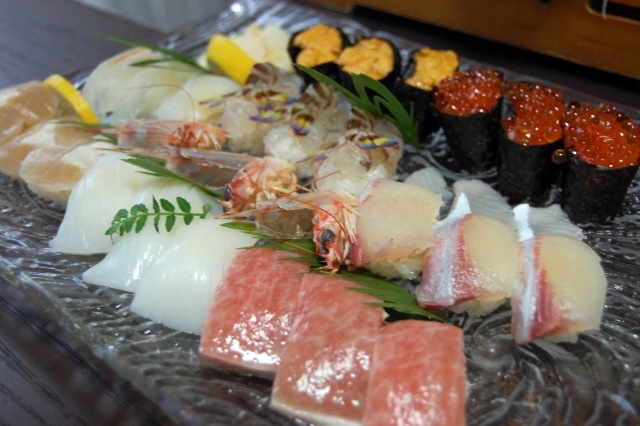When you think of sushi,
you probably imagine a chef shaping rice and fish with delicate hands.
That image is right — but it’s only one part of Japan’s sushi story.
In Japan, sushi is not only a fine dining experience.
It’s also homemade, festive, and unique to each region.
Let’s take a look at the different types of sushi that go beyond what you already know.
Chirashi-zushi – The “Scattered” Sushi
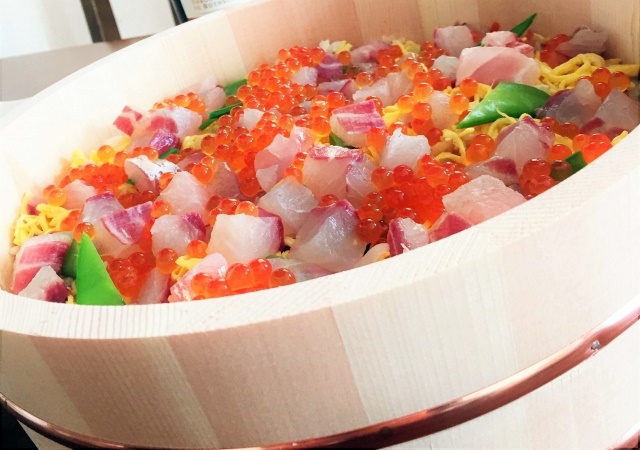
The most popular homemade sushi is called chirashi-zushi (ちらし寿司).
The word chirashi means “to scatter.”
A layer of vinegared rice is placed in a bowl or tray.
Then it’s topped with colorful ingredients —
sweet carrots, simmered mushrooms, and thin golden strips of egg called kinshi tamago (“golden silk threads”).
On top, you’ll see shrimp, scallops, or sashimi pieces,
scattered like flowers blooming in a spring field.
Chirashi-zushi is often made for celebrations —
like birthdays or the Doll’s Festival in March.
You can also find it at many sushi restaurants.
It’s cheerful, beautiful, and full of home warmth.
Temaki-zushi – Hand-Rolled Sushi for Everyone
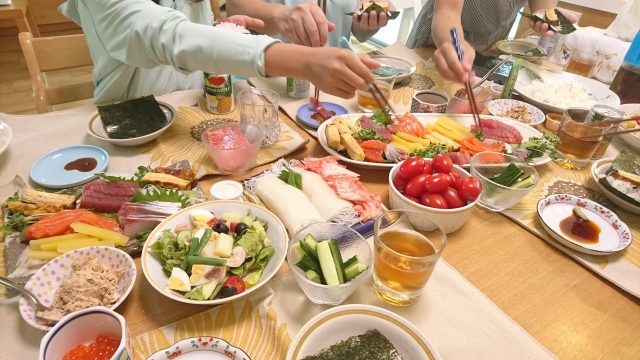
Temaki (手巻き) means “hand-rolled.”
This is the most casual and fun style of sushi.
It’s perfect for home parties or family gatherings.
Spread a sheet of seaweed, add a small amount of rice,
then choose your favorite toppings — tuna, cucumber, avocado, or salmon roe.
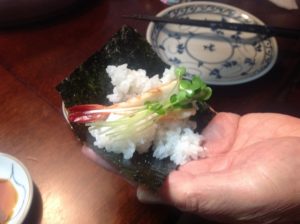
Roll it into a cone shape with your hands.
That’s it — simple and fun!
Everyone makes their own, so no two temaki are the same.
Just remember: don’t stuff too much inside.
If you do, your cone will never close!
Regional and Traditional Sushi
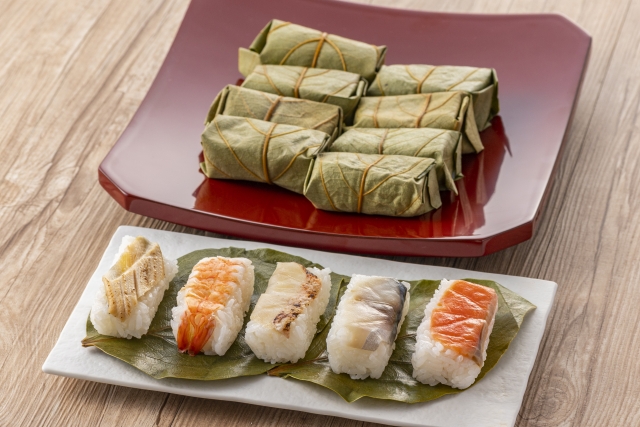
Across Japan, many regions have their own local sushi traditions.
Long ago, sushi began as a way to preserve fish.
Some were tightly pressed and left to ferment,
developing a unique sour flavor from natural lactic acid.
Others were wrapped in bamboo or persimmon leaves.
These leaves have antiseptic qualities and keep the sushi fresh.
Such regional styles are rare, even for locals.
But you can often find them in department store basements (depachika),
where specialty foods from all over Japan are displayed.
It’s like traveling across Japan — without leaving the city.
Sushi as a Reflection of Japanese Life
Sushi is not only about ingredients.
It’s about balance, beauty, and the rhythm of the seasons.
Whether it’s served at a fine restaurant or shared at home,
sushi represents the Japanese sense of harmony — wa.
Each type has its own story.
A story of celebration, of family, of gratitude for nature.
So next time you enjoy sushi,
remember — it’s more than a meal.
It’s a quiet expression of Japan’s culture.

